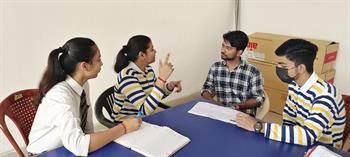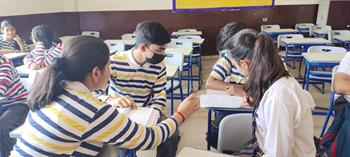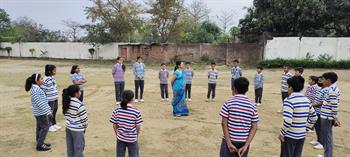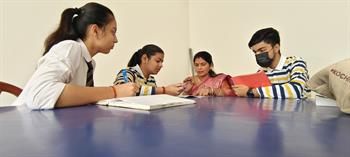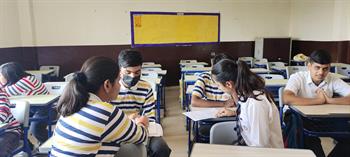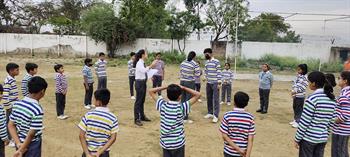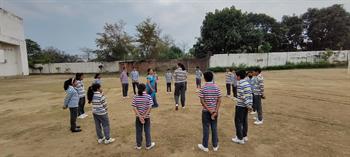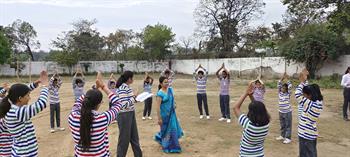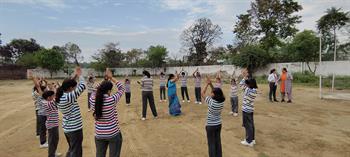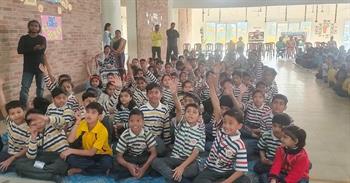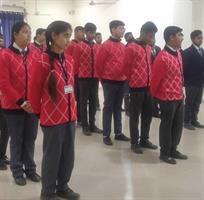- Language
- Submit your story
- DONATE NOW
STORY PREVIEW
Modernisation- reliving our past
Sunbeam sultanpur
Uttar Pradesh
MENTOR
Rashi Kaushik


We, the students (of class 9/10) of sunbeam School Sultanpur, have felt that in the path of modernising we have forgotten our roots. Through this project we have put on efforts towards revamping our roots and perception through the revival of Gurukul education. As we all know, our ancient education system had a unique and holistic approach that focused on overall development and not just academics. We have realized that the modern education system has some drawbacks, and we need to bring back the essence of our roots to provide a better learning experience to our children. We'll be discussing why this is important, what needs to change, and how we can make these changes happen at the ground level. Why is it important? Our current ways of thinking and behaving have led to many problems such as environmental degradation, social inequalities, and mental health issues. We need to revamp our roots and perception to address these issues and create a more sustainable, just, and healthy future for ourselves and future generations.
What needs to change? We realized that the current education system is more focused on rote learning and memorizing information without practical application. It is not enough for our children to excel academically. They also need to learn essential life skills, such as critical thinking, problem-solving, communication, and teamwork. Gurukul education can provide a more comprehensive learning experience that focuses on all aspects of development. Some of these changes include: • Shifting our focus from individualism to community and collective well-being • Recognising and valuing the interconnectedness of all things • Prioritising sustainability over short-term gains • Addressing systemic inequalities and injustices • Promoting empathy, compassion, and understanding Why is it important? Our current ways of thinking and behaving have led to many problems such as environmental degradation, social inequalities, and mental health issues. We need to revamp our roots and perception to address these issues and create a more sustainable, just, and healthy future for ourselves and future generations.
The people who were and will be adversely affected is the youth. The new generation is forgetting it's roots. Which is a concern in their path of development and modernisation. Our current ways of thinking and behaving have led to many problems. We need to revamp our roots and perception to address these issues and create a more sustainable, just, and healthy future for ourselves and future generations.

How can we make these changes happen? Revamping our roots and perception will require individual and collective efforts. • Educating ourselves and others about the importance of these changes • Engaging in conversations and activities that promote empathy, compassion, and understanding • Supporting sustainable practices and businesses • Advocating for systemic change through political and social action • Practicing mindfulness and self-reflection to identify and address our own biases and habits Reviving Gurukul Education After extensive research and planning, we decided to revive the Gurukul system in our community. We reached out to knowledgeable and experienced individuals who could guide us on the right path. Our community members came forward to contribute to the cause by offering their resources, skills, and time.
We decided on engaging and teaching our school fellows and teachers the importance of our culture and tradition and the forgotten past.

Revamping our roots and perception will require individual and collective efforts. We started with: • Educating ourselves and others about the importance of these changes • Engaged in conversations and activities that promoted empathy, compassion, and understanding • By practicing mindfulness and self-reflection to identify and address our own biases and habits, and tried to resolve it. Reviving Gurukul Education After extensive research and planning, we decided to revive the Gurukul system in our community. We reached out to knowledgeable and experienced individuals who could guide us on the right path. Our community members came forward to contribute to the cause by offering their resources, skills, and time. The Gurukul Curriculum We developed a comprehensive curriculum that included all aspects of learning. The curriculum covered academics, yoga, meditation, Sanskrit, and life skills. Our curriculum was designed to provide an all-rounded learning experience for the children. Gurukul Classroom We set up a Gurukul classroom in a peaceful and serene environment, away from the hustle and bustle of the city. The classroom was designed to promote an atmosphere of learning and reflection. We used natural materials, such as wood and clay, to create a warm and welcoming environment. Why was the Gurukul Curriculum useful? The Gurukul Curriculum was a good way of awakening and inspiring people towards our ancient customs and traditions as well as they could learn new things like yoga.
The Result: The response we received from the children was overwhelming. They were excited to come to the Gurukul classroom every day and were eager to learn. We saw an improvement in their academic performance, communication skills, and overall behavior. The Gurukul education system also helped them develop a positive attitude towards life. Thus, we draw the inference that revamping our roots and perception through the revival of Gurukul education was a success. We were able to provide a better learning experience to our children and prepare them for life. We hope that our efforts will inspire other communities to take similar steps towards reviving our ancient education system. In conclusion, revamping our roots and perception is not an easy task, but it is necessary for creating a better future for ourselves and future generations. By making these changes at the ground level, we can create a ripple effect that spreads throughout society and leads to positive change on a larger scale. Let's work together to revamp our roots and perception for human benefit.
100
Everyone was excited to come to the Gurukul classroom every day and were eager to learn. We saw an improvement in their academic performance, communication skills, and overall behavior. **People without the knowledge of their past history, origin and culture is like a tree without roots.** “We may have different religions, different languages, different colored skin, but we all belong to one human race”
It was a slow and small initiative. For it change the society, we need more large scale awareness campaigns. It should affect and be affected by every personal in the society. But, we beleive, even small steps may have huge impacts. We shouldn't think it over with the mind set that, at we aren't enough as an individual. As the way we change ourselves the society will automatically change.
MORE THAN 30 DAYS
Peace, Justice and strong institutions
This initiative would have a huge impact on the society with a small step. This will create peace and harmony among people.

We conducted various assemblies and meetings. We spoke about the problems, the importance, and how can we bring the change.
More than 100
• Shifting our focus from individualism to community and collective well-being • Recognising and valuing the interconnectedness of all things • Prioritising sustainability over short-term gains • Addressing systemic inequalities and injustices • Promoting empathy, compassion, and understanding Revamping our roots and perception will require individual and collective efforts. • Educating ourselves and others about the importance of these changes • Engaging in conversations and activities that promote empathy, compassion, and understanding • Supporting sustainable practices and businesses • Advocating for systemic change through political and social action • Practicing mindfulness and self-reflection to identify and address our own biases and habits Reviving Gurukul Education After extensive research and planning, we decided to revive the Gurukul system in our community. We reached out to knowledgeable and experienced individuals who could guide us on the right path. Our community members came forward to contribute to the cause by offering their resources, skills, and time. We developed a comprehensive curriculum that included all aspects of learning. The curriculum covered academics, yoga, meditation, Sanskrit, and life skills. Our curriculum was designed to provide an all-rounded learning experience for the children. We set up a Gurukul classroom in a peaceful and serene environment, away from the hustle and bustle of the city. The classroom was designed to promote an atmosphere of learning and reflection. We used natural materials, such as wood and clay, to create a warm and welcoming environment.





